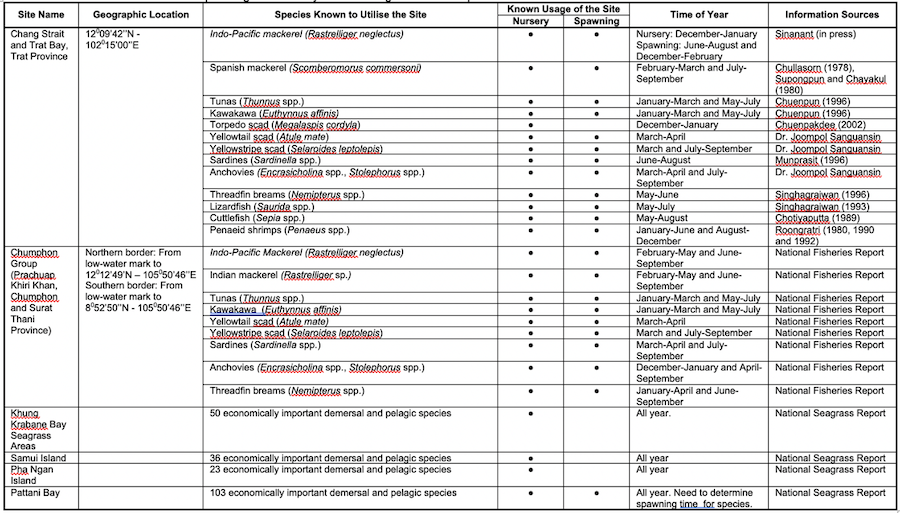Background & Situation Menu
Status and Trends in Fisheries and their Habitats Threats, root causes and barrier analysis Institutional, sectoral and policy context Stakeholder mapping and analysis Baseline analysis and gaps Known Areas of Critical Significance to the Life-Cycles of Fisheries Resources Priority Fisheries Refugia Areas



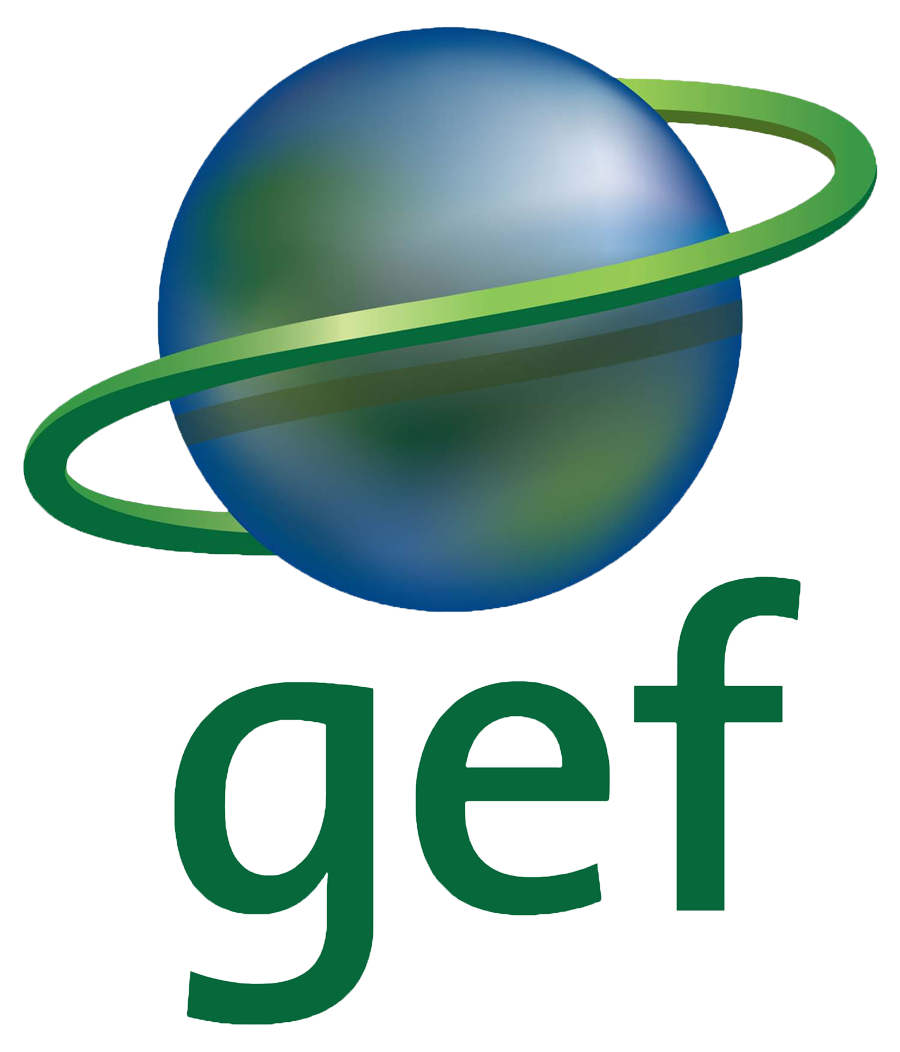
Establishment of Fisheries Refugia in Thailand:
Background and Situation Analysis to Support
Known Areas of Critical Significance to the Life-Cycles of Fisheries Resources
The physical, chemical, and biological characteristics of the Gulf of Thailand
The Gulf of Thailand may be characterized as a classical two-layered, shallow-water estuary. Low salinity water, diluted by heavy precipitation and freshwater runoff, flows out of the Gulf at the surface. There is inflow of high salinity, relatively cool water from the South China Sea into the Gulf. This high salinity water fills the deep, central depression below a depth of approximately 50 m. Superimposed on this 2-layered system is a complex circulation system, which is established by wind-driven currents related to monsoon winds and tidal currents. Neither the northeast nor the southwest monsoon winds are observed to have a constant direction or velocity over the Gulf as a whole. The interplay of variable winds, tidal currents, freshwater runoff, and excessive precipitation gives rise to localized areas of divergence where a low temperature, high salinity water, usually of low oxygen content, is upwelled. These forces also establish areas of convergence where high temperatures, low salinity, and highly oxygenated water sinks. All of these characteristics make the Gulf of Thailand one of the most productive areas in Southeast Asia.
It is observed that regions of relatively steep horizontal gradients in surface water properties, such as salinity, nutrient salts, and phytoplankton, were located in the vicinity of Samui Island, where oceanic fronts form due to the convergence of water masses from coastal areas and the central Gulf that originate from the South China Sea. This indicates that water areas adjacent to Samui Island are potentially good for fishing. The combined effects of topographical features, tidal regimes, monsoonal water circulation, freshwater runoff, coastal upwelling, and offshore water intrusions govern the oceanography of the Gulf of Thailand. The annual surface water temperature varies very little. Gulf waters are well mixed before the NE monsoon, after which a thermocline becomes more distinct. From fish egg and larval surveys, it is apparent that pelagic and demersal fish spawn during both the NE and SW monsoon, with a peak in spawning after the NE monsoon. It is believed that more species probably spawn in the area during the SW monsoon season (UNEP, 2007).
Known spawning and nursery areas
There are 12 species or groups of species with known spawning and nursery areas. Marine environmental conditions are also known. These include bathymetry and coastal geomorphology; water circulation and tide; meteorological parameters, i.e., wind, monsoon season, air temperature, humidity, and air pressure; seawater parameters, i.e., salinity, temperature, pH, dissolved oxygen (DO), nutrients, total suspended solids, and turbidity; phytoplankton and zooplankton; primary production, benthos, and bottom sediment characteristics. The results of the surveys, conducted since 1963, indicate that the larvae of Rastrelliger spp. concentrate in area 10 to 40 nautical miles off the western coast of the Gulf of Thailand (Figure 1). Phytoplankton and zooplankton are also observed to be abundant in this area during the spawning season.
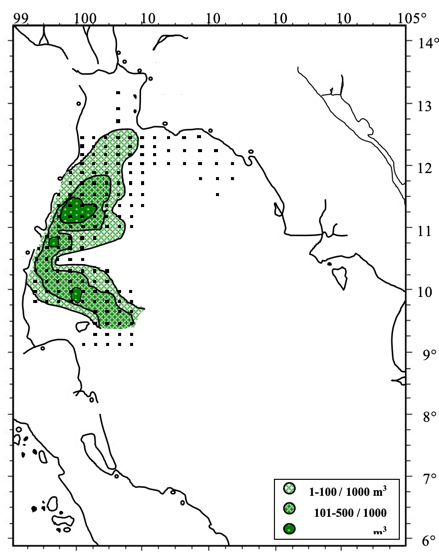
Figure 1. The abundances of Indo-Pacific mackerel larvae (R. brachysoma) observed at various surveys stations in the Gulf of Thailand (based on UNEP, 2007)
The spawning grounds and season for Decapterus maruadsi and D. macrosoma in the Gulf of Thailand have been determined from observations of seasonal changes in the stage of gonad development. Spawning is believed to occur from February to August, with peaks from February to March and from July to August in the deeper area of the Gulf (Figure 2). Spawning grounds of neritic tuna are located along the Gulf’s western coast, with concentrations in the middle of the Gulf (Figure 3). The spawning grounds for anchovy are depicted in Figure 4.
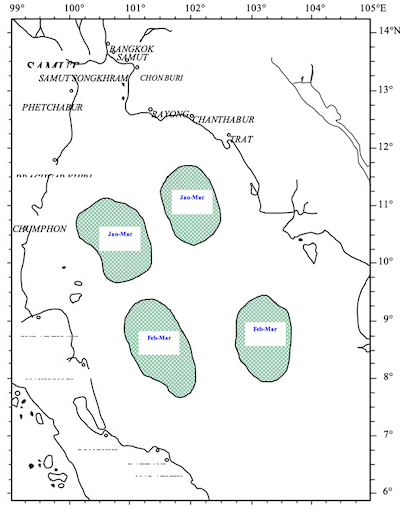
Figure 2. The spawning grounds of round scads (Decapterus spp.) in the Gulf of Thailand (based on UNEP 2007).
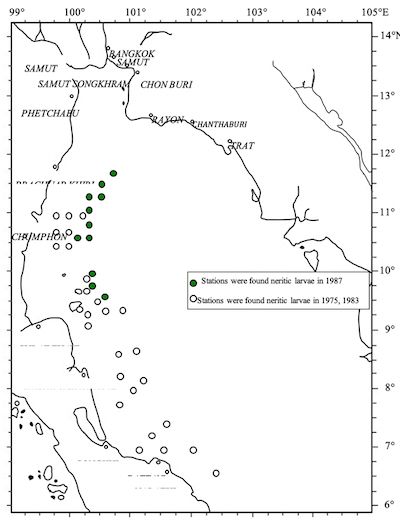
Figure 3. The stations where the eggs and larvae of neritic tunas have been observed to be abundant during surveys conducted in the Gulf of Thailand (based on UNEP, 2007).
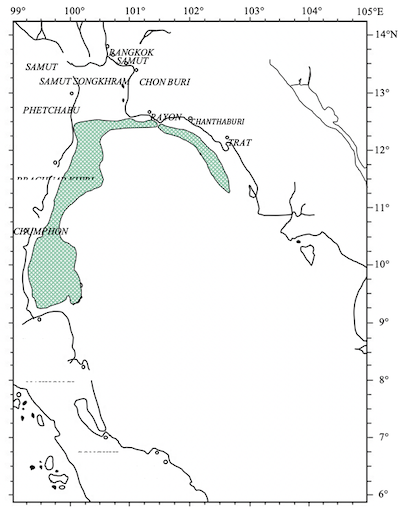
Figure 4. The spawning grounds for anchovy in the Gulf of Thailand (based on UNEP, 2007).
Many studies have shown that the distribution and abundance of pelagic and demersal fish larval are related to plankton densities. Plankton production rates are higher in nearshore areas and decrease vertically with depth. The nursery areas of important marine fauna in the Gulf of Thailand are mostly located in inshore areas, including mangrove areas, seagrass meadows, and coral reefs. The feeding grounds of most fished species are generally the same as the areas in which they are fished.
Enhancing the information base: The information presented above provides insight into broad areas considered important as spawning and nursery areas for fish stocks. To assist in building the information base on areas significant to the life-cycles of fisheries resources, the seventh meeting of the UNEP/GEF South China Sea project’s Regional Working Group on Fisheries (RWG-F) considered a preliminary inventory of known spawning areas in the Gulf of Thailand for significant pelagic, demersal, and invertebrate species. To assist in developing a more comprehensive basis for the development of a list of critical spawning and nursery areas for important fish species, members of the RWG-F agreed to compile information during the inter-sessional period on the UNEP/GEF South China Sea Project’s Habitat Demonstration Sites that are critical inshore nursery refugia for important demersal species, locations in the South China Sea and the Gulf of Thailand that are utilized by important pelagic species for spawning, and existing fisheries management areas that may qualify as candidate sites of fisheries refugia. The Department of Fisheries in collaboration with SEAFDEC compiled this information for review by Thailand’s National Fisheries Committee prior to its sharing at the regional level.
The subsequent and eighth meeting of the RWG-F considered document UNEP/GEF/SCS/RWG-F.8/5 “Information Collated by the Fisheries and Habitat Components of the South China Sea Project on Sites Important to the Life-Cycles of Significant Fish Species”. This document contained a review of all information collated by the fisheries and habitat components of the South China Sea Project on fish-habitat linkages. The sources of this information included: national reports on fisheries; national reports on coral reefs, seagrass, mangroves, and wetlands; SCS habitat site characterizations; habitat demonstration site project documents; the South China Sea online meta-database; and information contributed directly by fisheries and habitat focal points. That meeting agreed that this information should be used to identify and characterize fish spawning and nursery areas in the Gulf of Thailand and the South China Sea. Members formed country-based sessional working groups to prepare country summaries of known critical spawning and nursery areas in their respective countries. These sessional working groups collated information regarding the approximate geographical location of the site; species are known to utilize the site; known usage of the site (i.e. as spawning and/or nursery area; time of year that the site is utilized as a spawning or nursery area; and the information source. During the inter-sessional period, Thailand’s Department of Fisheries undertook national consultations with national experts and fishing communities to refine this information.
The ninth meeting of the RWG-F reviewed discussion document UNEP/GEF/SCS/RWG-F.9/8, “Review of Information regarding known Spawning and Nursery Areas and the Establishment of Pilot Fisheries Refugia Sites in the South China Sea and the Gulf of Thailand”, and update information for each known spawning and nursery area and add new sites to the list as appropriate. The revised list of known spawning and nursery areas for economically important fish species in Thailand’s waters of the South China Sea was considered by the national consultation workshop for the preparatory phase of the SEAFDEC/UNEP/GEF project “Establishment and Operation of a Regional System of Fisheries Refugia in the South China Sea and the Gulf of Thailand”, and is presented below as Table 1.
Table 1
